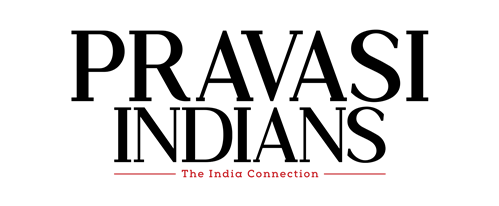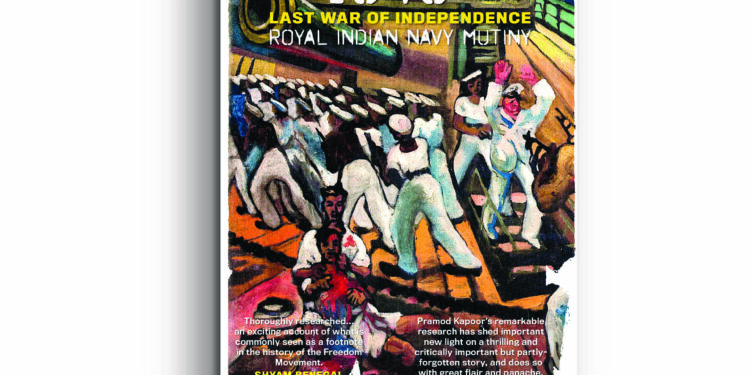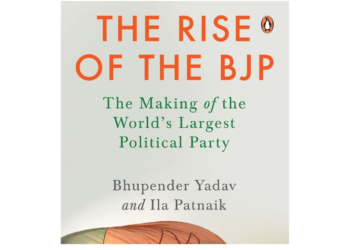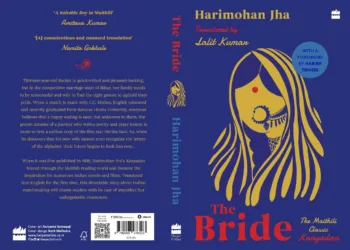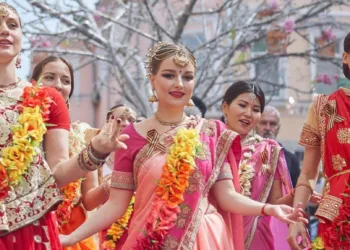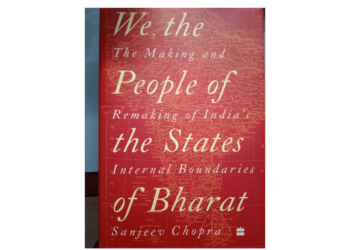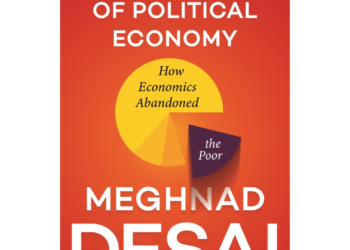Author-publisher Pramod Kapoor pieces together the grand saga of the four tumultuous days that shook Bombay and India during the last days of the British Raj
BY DR SANJEEV CHOPRA
Woh kaun sa jazba tha jis se, Farsauda-e-Nizamat jeest hila Jhulse hue veeran gulshan mein, ek aas umeed ka phool khila, Janata ka lahoo faujan se mila … faujan ka lahoo, janata se mila.
(What passion it was that mingled to make a moth-eaten system quiver, What passion it was that caused a flower of hope to bloom in this dreary desiccated land, What passion it was that mingled the blood of people with the armies, the blood of the armies with the people. (Sahir
Ludhianvi on the 1946 naval uprising)
The uprising was thus the muse for the poet, as well as for a sub-plot in John Masters’ Bhowani Junction, Salman Rushdie’s The Moor’s Last Sigh as well as Amitav Ghosh’s The Glass Palace, besides the very popular Bengali play, Kallol, which the then Congress government in West Bengal tried to ban. There were also first-hand accounts, B.C. Dutt’s Mutiny of the Innocents besides Kusum Nair’s The Army of Occupation, but putting all the sources together, including the reports of the Inquiry Commission, correspondence of the prominent leaders of the time and newspaper reports with their very different perspectives is Pramod Kapoor’s magnum opus — 1946 Royal Indian Navy Mutiny; Last War of Independence.
The choice of the title is so very interesting. It was the last war of independence, and it was also a mutiny. Kapoor thus gives us a perspective from both sides, though the striking point is the ‘last war’, which immediately reminds one of the first war, and how it came to be so called. Till Veer Savarkar wrote The First War of Independence in 1909, the events of 1857 continued to be referred to as a mutiny. Textbooks were revised after Independence. Karl Marx had described these events as a revolt in his despatches to the New York Times which published a series of articles on the subject. This also shows the importance of the historian’s craft — it is he who makes the past come alive in the present. This then forms the basis of popular narrative, theatre, fiction, non-fiction and political discourse.
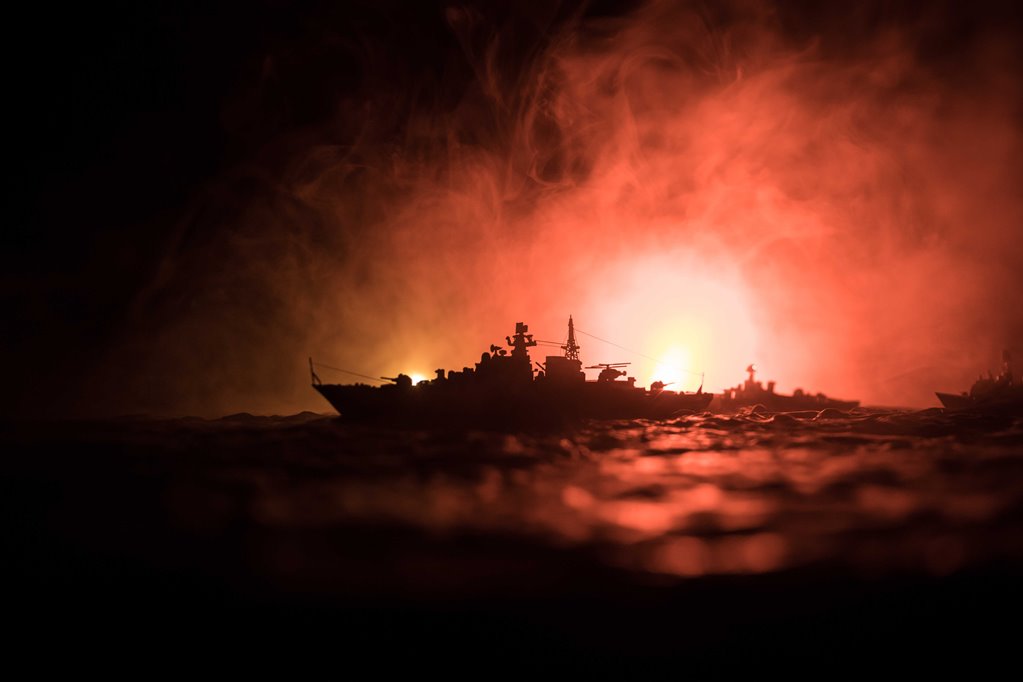
In 1946, this uprising shook not just Bombay but had reverberations in Calcutta and Karachi as well as on troops across India, with men in the Royal Indian Air Force (RIAF) and some paltans
also expressing their support for the ratings in their protest against the sub-human conditions in which they were compelled to live. This is a riveting story narrated by author-publisher Pramod Kapoor who has done extensive research on the subject. It is so important to call it the Last War of Independence because in a way it marks closure from the first war; it also shows that even after a lapse of nine decades the British never understood the sentiments of the troops who fought for them. As in the case of the First War, the communication between the troops and the officers had broken, the officers continued to use racial slurs, pay was inadequate, promises were not kept, and the overwhelming feeling was that the troops could be suppressed by use of force. From the side of the freedom fighters it could be said that they rallied under the banner of Hind or Hindustan, irrespective of the Hindu-Muslim divide, and made demands that were not just for themselves but for a cause larger than their own. However, there were significant differences too. While 1857 marked the ascent, 1946 marked the terminal decline of British power.
What were the reasons for the uprising? Having fought shoulder to shoulder with other troops from the Commonwealth, and having seen the heroism of the Indian National Army (INA), Indian sailors, soldiers and airmen fought for their dignity. They also realised that they were second to none when it came to courage, fortitude and bravery. But they also saw discrimination first-hand — not only were they paid less than their counterparts — they were literally castaways after the world war ended, and all promises made to them at the time of recruitment “went up in smoke”. From a strength of 27,000 ratings at the height of the war, the decision to reduce the numbers to 11,000 meant that over 16,000 were rendered redundant and they had to be demobilised on a weekly basis — 500 per week.
Added to this was the very poor quality of food and a non-existent grievance redressal mechanism which led to four days of absolute turmoil in Bombay with repercussions in Karachi and elsewhere. Finally, the army had to be called out — not just to restore order in the city of Bombay but also to take over the naval establishments as the naval authorities found the situation quite out of hand. In fact, as a matter of abundant precaution, the Maratha troops were also replaced by British soldiers because Gen. Claude Auchinleck, the commander-in-chief, could no longer trust the loyalty of the Indian soldiers. But the greater implication of all this was that within two days, the Cabinet Mission to India (the Cripps Mission) declared its intent to visit India to make arrangements for the transfer of power. The Last War of Independence had shaken their resolve.
Kapoor records these four tumultuous days — from Monday, February 18, to Thursday, February 21, by the hour. Although the hunger strike had commenced from the evening of February 17 when the ratings refused to eat the “watery dal with gravel and the inedible rotis”, it was the refusal to attend the parade on the morning of the 18th that marked the beginning of the uprising. The two Indian officers on watch on INS Talwar, the signal ship, were jeered and hooted away, and by 8.45 am, the Royal Indian Navy (RIN) men raised the battle cry, “Inquilab Zindabad!” By 12.30 pm, Commander King had been replaced but negotiations with the Flag Officer Commanding of Bombay failed, and the Talwar was under the control of the ratings. Because she was a signal ship, the message spread to all the 11 shore establishments and the fleet near Bombay (four flotillas, 11 miscellaneous ships and 45 general duty ships). By 6 pm, All India Radio reported it in the evening bulletin and the next morning, this was the headline across newspapers — from the pro-British The Times of India and The Statesman to the nationalist
papers like Free Press Journal, Bombay Chronicle, Hindustan Times and Blitz. Obviously, the coverage of the mutiny/uprising/revolt reflected the perspective of those in control of these papers.
By the second day, the Central Naval Strike Committee had been formed under the leadership of M.S. Khan and Madan Singh. The Central Committee did something unprecedented — it removed the Union Jack from the masts and replaced it with three flags: of the Congress, the Muslim League and the CPI, perhaps the only time these three flags representing three diverse ideologies flew from the same pole. The Central Committee also appealed to the “established leaders of the political parties” to intervene on their behalf.
However, by this time the established political parties — especially the ones which saw themselves as successors in office to the Raj, the Congress and the Muslim League — were in no mood to support the “indiscipline” of the sailors. Jinnah rejected them outright, Nehru was initially sympathetic but had to give way to Sardar Patel, who issued a statement that the Congress was “making all possible efforts to bring about a peaceful settlement of the long-standing legitimate grievances of the ratings”. This is what persuaded Khan to make the announcement, “in the present unfortunate circumstances that have developed, the advice of the Congress to the RIN ratings is to lay down arms and go through the formalities of surrender”. The only person who stood by them, and even sparred publicly with Mahatma Gandhi on their behalf, was the bold and intrepid Aruna Asif Ali, who was edged out by the Congress leadership when it came to negotiations with the British.
After the surrender, a Commission of Inquiry was constituted under Justice Fazl Ali, Justice Krishnaswami Iyengar, Justice Maher Chand Mahajan,Vice Admiral Patterson and Major General T.W. Rees with Lt Col Visheshwar Nath Singh as the secretary. The report concluded that “the basic cause of Mutiny was widespread discontent, arising mainly from a number of grievances which had remained unredressed for some time, and were aggravated by the political situation”. The government also accepted “that officers must consider the welfare of their men before their own comfort or safety and that grievances should not be explained away but redressed, and secondly, too rapid an expansion without proper provision for training of officers is unwise, and that the aim of services in peace should be to prepare for expansion of war”.
Noble words, indeed. But the ratings were soon forgotten: they were neither reinstated, nor given the status of freedom fighters, and they had to wait till 1973 before some of them were given the pensions due to them for having served in the navy. They would have continued to be a footnote in history but, thanks to Pramod Kapoor, the legend of their valour and sacrifice will live on!
In fact, Kapoor has a regret: had he started the research even a decade earlier, he would have had the oral testimonies of the participants themselves or at least of those who had seen them in flesh and blood!
That they did not succeed is not as important as the valiant effort they made — and this is also the story of how the leading political figures of the times — the Mahatma, Nehru, Patel, Jinnah, Asaf Ali and G.N. Adhikari of the CPI viewed the issue from their own prisms.
The narrative built in the immediate aftermath of independence was built on the theme of how the struggle for India’s freedom was unique in that it was able to drive out the world’s mightiest empire with the mass mobilisation of satyagraha. Even visually, the contrast between the images of the Mahatma and the Earl of Mountbatten was a study in contrasts in every sense of the term — from the philosophical to the sartorial. It perhaps also suited India to leverage this image globally as India did not want to join either of the two blocs.
The author is a historian, public policy analyst, and Festival Director at the Valley of Words, Dehradun. Until recently, he was the Director of the Lal Bahadur Shastri National Academy of Administration, Mussoorie.
@pramodkapoor @rolibooks
